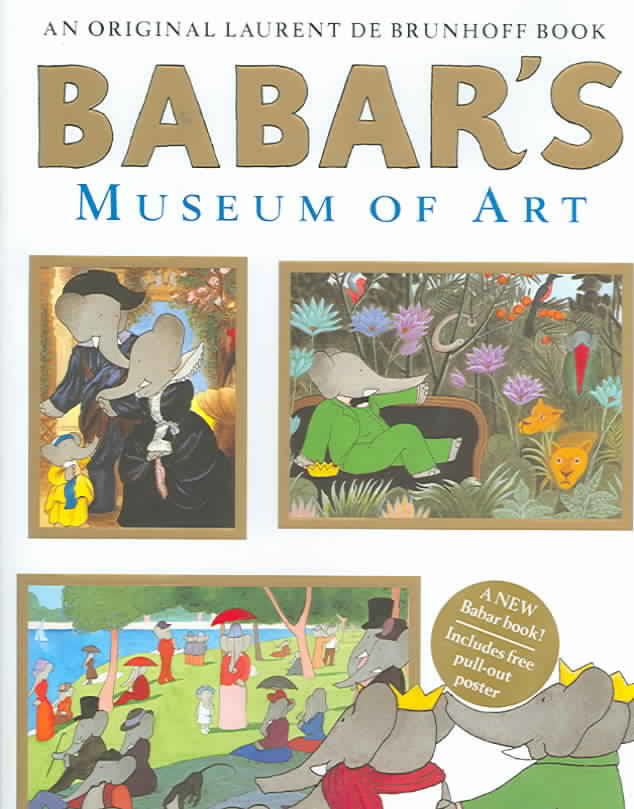8.2 /10 1 Votes8.2
Language English Publication date 2003 Originally published 2003 | 4.1/5 Goodreads Country United States Media type Print (hardcover) Publisher Abrams Books OCLC 52530997 | |||||||||||||||||||||||||||||||||
 | ||||||||||||||||||||||||||||||||||
Similar Laurent de Brunhoff books, Elephant books, Children's literature | ||||||||||||||||||||||||||||||||||
Babar's Museum of Art (or Babar's Gallery) was the collaborative product of Laurent de Brunhoff (illustrations) and his wife Phyllis Rose de Brunhoff (text) for the Babar the Elephant series. The aim was to introduce different notable works of art found in museums around the world, mostly paintings, but also including sculptures. The human subjects in these artworks were re-interpreted as elephants.
Contents
Plot summary
As the elephants in Celesteville took to motoring, the city's train station lost its original purpose. Queen Celeste decided to convert the station into an Art museum to showcase all the artworks she and Babar had collected over the years.
When the museum was opened, the adult elephants patiently explained to the young elephants different perspectives on art appreciation.
Trivia
The conversion of the Celesteville's obsolete train station into a museum of art in the story is inspired by the conversion of Gare d'Orsay (Paris, France) to the now famous Musée d'Orsay. The design of the station in the story bears striking resemblance to the actual Gare d'Orsay, including the large clock at the facade of the station.
In real life, the cause of obsolescence of Gare d'Orsay was its platforms became too short as longer trains came into service. Gare d'Orsay had been built in 1900 to serve as terminus for the Chemin de Fer de Paris à Orléans (Paris-Orléans Railway). It ceased to cater to long-distance rail traffic in 1939 and served only suburban rail services.
The decision to convert it to a museum was announced in 1977. Listed as a historical monument in 1978, it re-opened as Musée d'Orsay in 1986.
A number of artworks featured in the story were inspired by actual artworks found in Musée d'Orsay.
Annotations
The following is a list of the real artworks inspiring the illustrations in the book. The page numbers cited refer to the UK edition titled Babar's Gallery.
